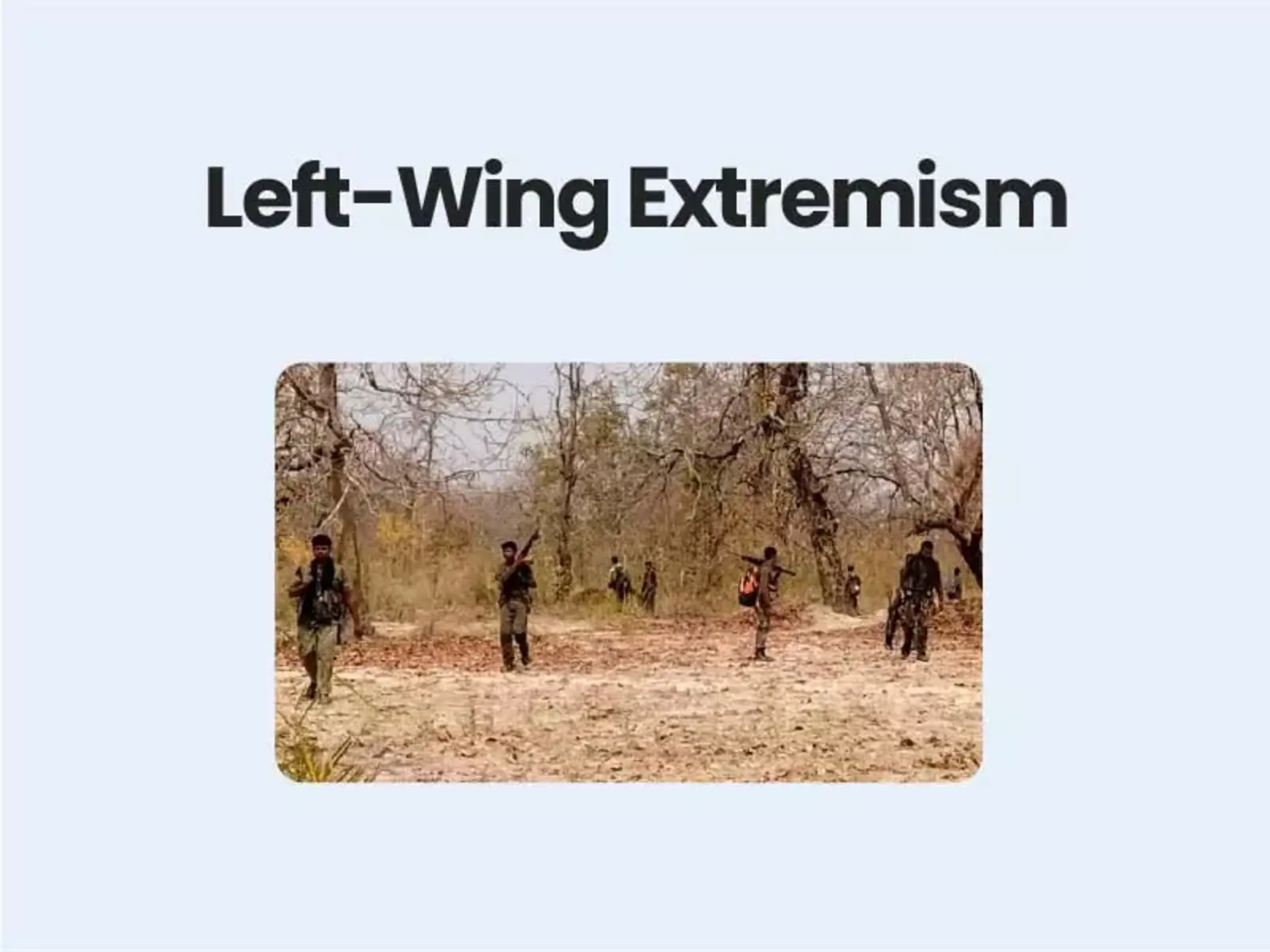Linkages between Development and Spread of Extremism.
In News:Maoist setback: On the anti-Naxalite operations this year
What causes left-wing extremism (LWE) to persist for more than five decades? Suggest corrective strategies to be taken to address the challenges posed by LWE.
Left wing extremists are the group of people who believe in the political theory derived from the teachings of the Chinese political leader Mao Zedong. They strongly believe that the solution to social and economic discrimination is to overthrow the existing political system.
According to Ministry of Home Affairs,90 districts in 11 States are considered as affected by Left Wing Extremism (LWE)
Causes for left-wing extremism:
- Socio-economic Disparities: Marginalisation of tribal and rural communities, lack of access to basic amenities, and economic inequality provide fertile ground for extremist ideologies to take root.The Bandyopadhyay Committee (2006) highlighted the lack of governance, economic, socio-political and cultural discrimination against the tribals as the chief reason for the spread of Naxalism.
- Distorted development:The implementation of development projects, mining operations, and other factors has resulted in significant displacement of tribal populations in states affected by LWE.
- Unemployment: Vulnerable individuals lacking sustainable means of support become susceptible to joining the Naxalite movement. Maoists exploit this situation by providing weapons, ammunition, and financial assistance to these individuals.
- Historical Grievances: Unresolved historical grievances, such as land disputes and cultural marginalisation, fuelled resentment and provided a sense of justification for violent resistance.Example:Tribal dissatisfaction arised from the Forest (Conservation) Act of 1980
- External Influences: Foreign powers or non-state actors provide support, training, or weapons to LWE groups, prolonging their activities.
- Failed Counterinsurgency Strategies: Ineffective or counterproductive counterinsurgency strategies, including excessive force and human rights abuses, can alienate local populations and drive them towards extremist groups.The Armed Forces Special Powers Act (AFSPA) shot 14 civilians in Nagaland on the pretext of “mistaken identity” in 2021
Strategies to address the challenges posed by LWE:
- Employing more local people in the administrative process which can act as a bridge to curtail the trust deficit.
- Counter ideological appeal is essential to combat the allure of Left-Wing Extremism (LWE).Further support of civil society can be taken for raising awareness among tribals. Example: A peace march was organised in 2021 where tribals from Chhattisgarh, Odisha and Telangana participated under the slogan of ‘Bastar maange hinsa se azadi’(Bastar seeks freedom from violence)
- Socio-economic Development: Investing in infrastructure, education, healthcare, and livelihood opportunities in affected areas to reduce poverty and inequality. Also providing relief measures for victims of Naxalism. Integrated Tribal Development Programme (ITDP) and Pradhan Mantri Gram Sadak Yojana (PMGSY) are in line with this.
- Good Governance: Promote transparency, accountability, and participation in governance to build trust between the government and the people.
- Security Measures: Employ targeted security operations based on intelligence and avoid excessive force to minimise civilian casualties.For instance, the Greyhounds involved the use of small teams that operate on solid human intelligence.
- Dialogue and Negotiation: Engage in dialogue and negotiation with LWE groups to explore peaceful solutions and address their grievances.
- Rehabilitation and Reintegration: Good surrender policy and offering incentives for former extremists and providing them with rehabilitation and reintegration programs.Surrender-cum-rehabilitation policy should be followed effectively.
- Enhancing the capacity of the state governments to tackle the left wing extremists in a concerted manner
- Community-Based Approaches: Empower local communities to participate in development and security initiatives to build resilience and reduce vulnerability to extremism.
- Regional Cooperation: Strengthen regional cooperation to address transnational threats and prevent LWE groups from seeking external support.
Through a holistic approach focusing on development and security related interventions, the LWE problem can be successfully tackled.
| PYQ : Naxalism is a social, economic and developmental issue manifesting as a violent internal security threat. In this context, discuss the emerging issues and suggest a multilayered strategy to tackle the menace of Naxalism. 2022What are the sound determinants of left-wing extremism in Eastern part of India? What strategy should Government of India, civil administration and security forces adopt to counter the threat in the affected areas? 2020Left Wing Extremism (LWE) is showing a downward trend, but still affects many parts of the country. Briefly explain the Government of India’s approach to counter the challenges posed by LWE.2018The persisting drives of the government for development of large industries in backward areas have resulted in isolating the tribal population and the farmers who face multiple displacements with Malkangiri and Naxalbari foci, discuss the corrective strategies needed to win the left wing extremism (LWE) doctrine affected citizens back into the mainstream of social and economic growth.2015 |

